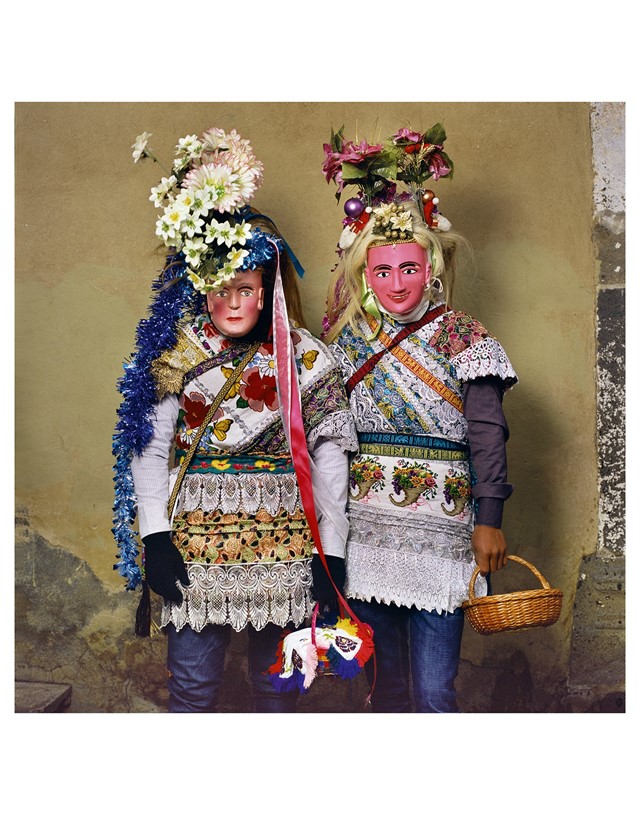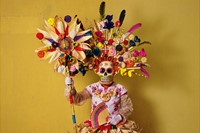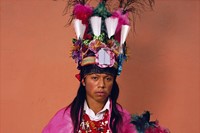Phyllis Galembo’s new book, Mexico, Masks & Rituals, is the result of ten years of photographing the costumes and masquerades of festivals and carnivals in the country
Phyllis Galembo has been photographing costumed people at various festivities and events in Mexico for the last decade, but still comes across something new every time she makes a trip to the country. “I was just in Mexico and did some other work and I was like, ‘Oh my God, I can’t believe this isn’t in my book, this is so nice,’” she tells me over the phone from New York, where she is based. “I am always pleasantly surprised. I just feel Mexico has been amazing for me.” Galembo, who has spent much of her career documenting masquerade and ritual in places like Africa and Haiti, is this month releasing Mexico, Masks & Rituals, a book that compiles ten year’s worth of her captivating photography in the country.
Galembo’s style and process has remained fundamentally the same over the course of her photographing masquerade in Africa, vodou and carnivals in Haiti and festivals in Mexico: she always shoots her portraits on film, mainly using a medium-format camera (with instant film on hand for test shots and souvenirs for her subjects to keep), and does the photographic work herself – though it is thanks to assistants in the country that she is able to access these storied festivities. “I basically travel alone and then I have a local person who meets me or somebody from the country that I work with. I am like a one-person show in terms of the equipment because most of the people I work with are not necessarily photographers, they help me with translation too because my Spanish isn’t great.” The resulting portraits are often shot relatively quickly – “sometimes they pose and they run off, and you don’t always get that much time because people are going on their way,” she says – as the festivities are happening around Galembo and her subject.
Vivid coloured walls provided the perfect backgrounds for Galembo’s photographs, which celebrate the history, craft and creativity that feed into the astounding masks and costumes her subjects wear. The rituals and festivals that she had access to are rooted in Catholicism – Los Reyes Magos, is held on the day that the three wise men visited Jesus and involves a series of dances that represent the nativity, for example – but have strong links to indigenous Mexico. For Galembo, the feeling of family and community she encountered became a significant aspect of the project: “There a sense of family that I think is super important and part of Mexican culture. I am glad I could do something positive because in the States here we are living with this nightmare of a president, saying horrible things and just being disrespectful to people and families. But that sense of family and humour is something that really came through strongly for me. They are really generous people.”
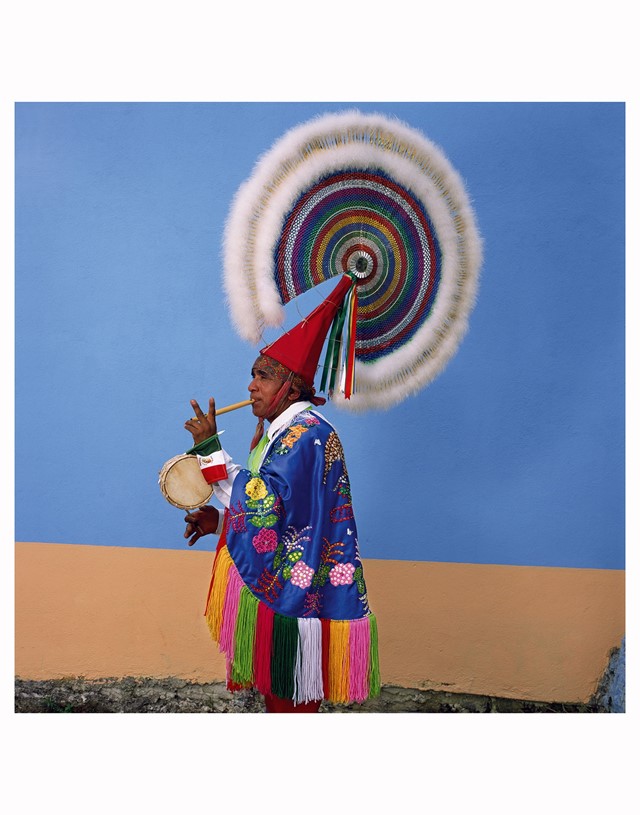
It is the details in Mexico, Masks & Rituals that really sing for Galembo. The costumes featured in the book range from boxy cardboard masks covering the entire face, and scrawled with expressions in black marker, to more elaborate layered creations, in satins and sequins and adorned with feathers, ribbons, tinsel, flowers and figurines. There are burlap sacks, worn at times to denote the wearer’s character as a peasant farmer in dances like the tlacololeros dance, ragged wigs and beards, and sometimes accessories in the form of weaponry, symbolising power.
The “beauty and richness and colour” are captured through Galembo’s lens, and the book itself features several close-up shots of costumes, zoomed to hone in on a satin, tinsel and feathered headpiece or the miniscule cartoon figurines sewn to the front of a dress. “I am interested in all the details and that’s why I think when I photograph, I am really close to the person physically. There’s not that much space between me and them,” she says. The photographer mentions that if an exhibition of the work were to happen, she would like the prints to be almost life-size to showcase such intricacies. “They are some of the most creative people I have ever met. Every time I look at a photograph – I mean, not to toot my own horn, but I am intrigued. I am inspired by every little piece of thing I see, like the little flowers on headpieces, or this cape of woven reeds that to me is so beautiful.”
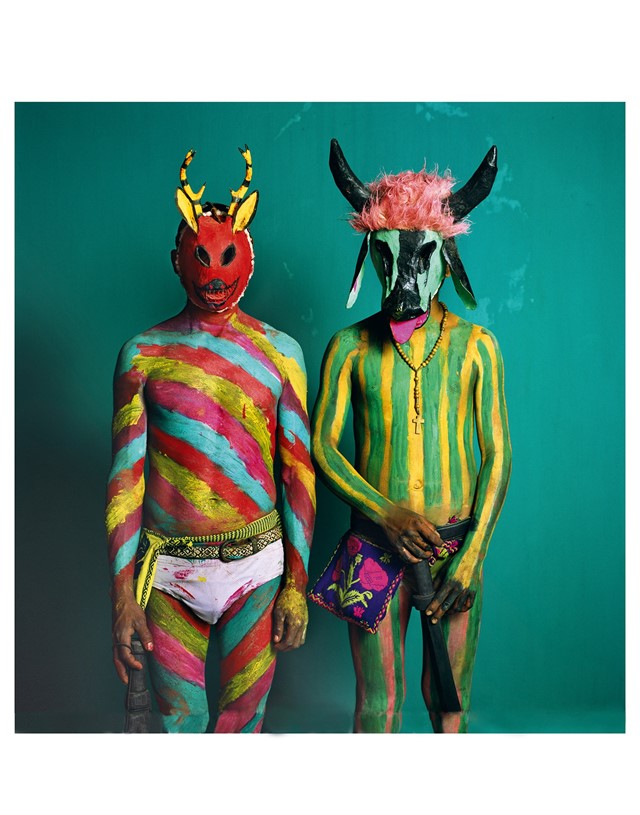
It is not just an aesthetic consideration that drives Galembo to capture these rituals of masquerading all over the world. Her photographs are informative and serve to document the traditions that people have been practising for generations, offering an alternative to “just seeing a mask in a museum”. “Most people are really willing to participate. I think they kind of like to be acknowledged, be a little bit part of history,” Galembo says, adding that she will often give instant pictures to her subjects or send prints back to them once she’s in New York. For the image-maker, who has been photographing since high school, it was a trip to Nigeria in the 1980s that first introduced her to the custom of masquerading, and an interest in such histories has been a mainstay in her photography ever since. By documenting these rituals of masks and costumes, Galembo’s photographs go beyond just being captivating, but become extraordinary artefacts.
Mexico, Masks & Rituals by Phyllis Galembo is available for pre-order now, published by Radius Books/D.A.P.
